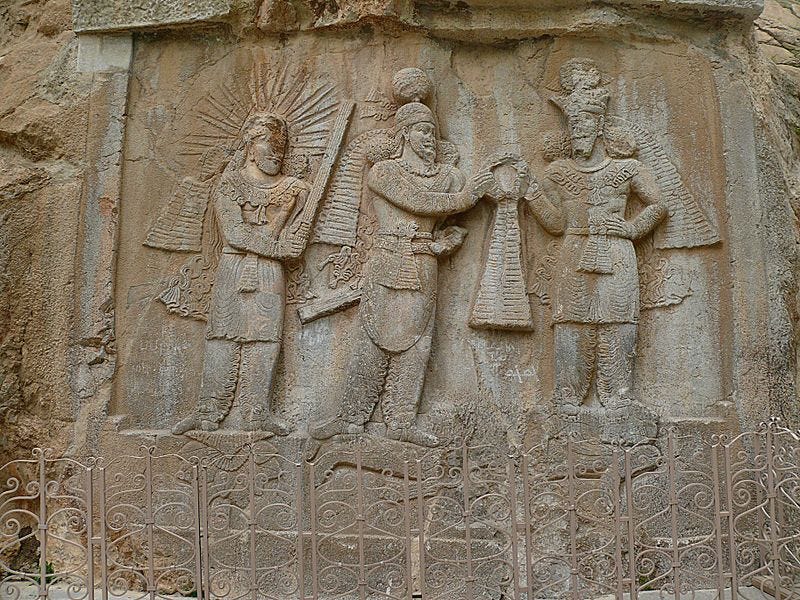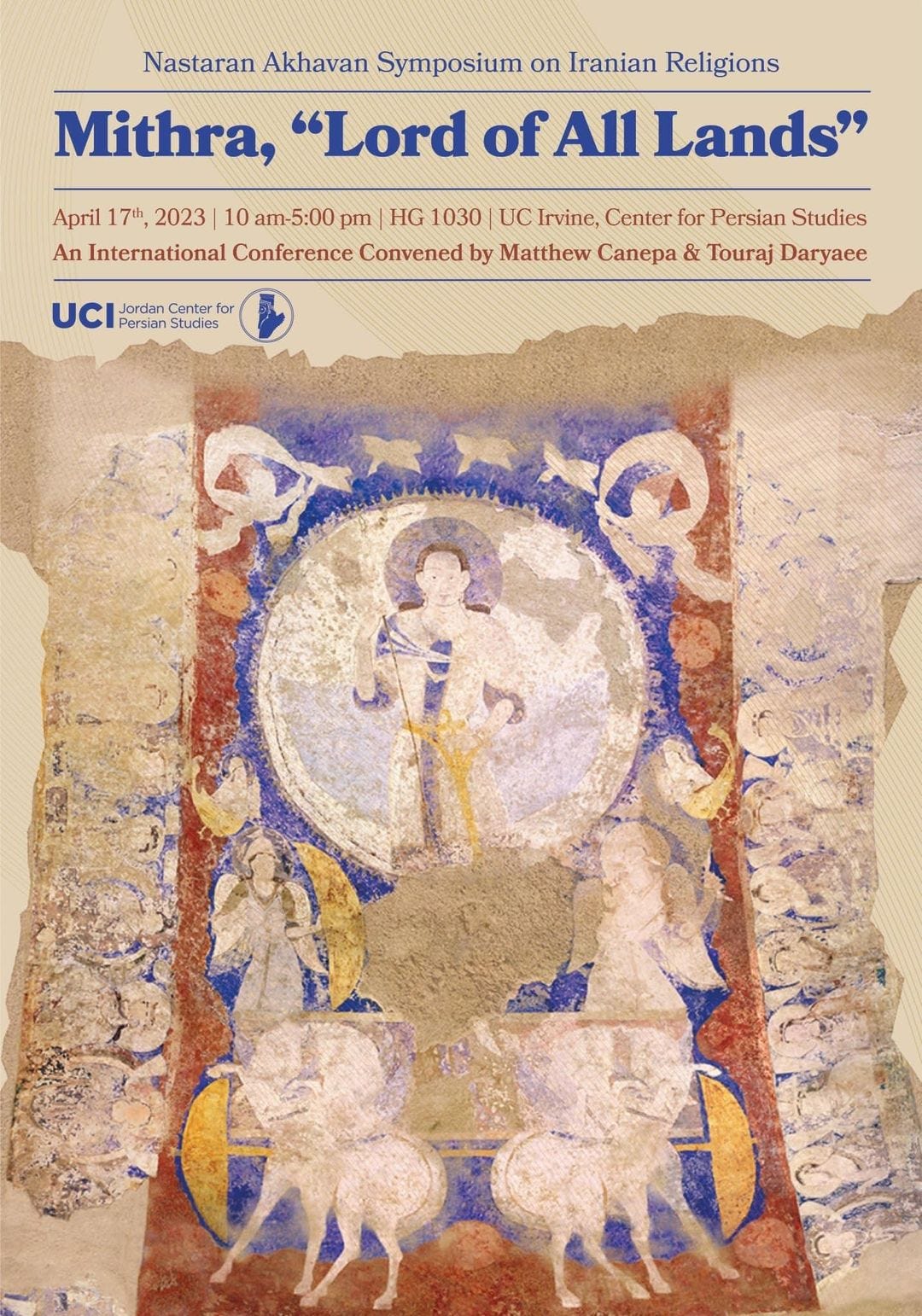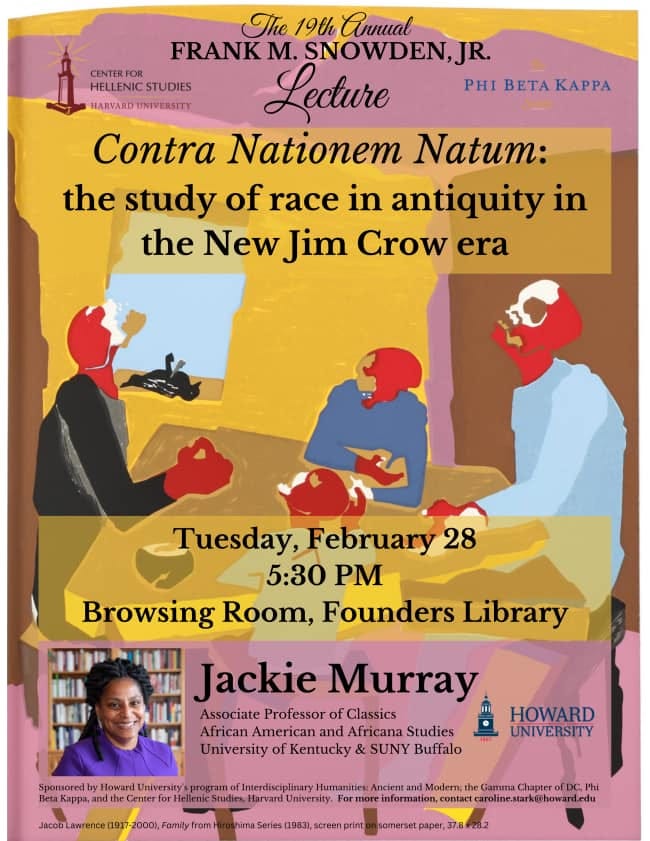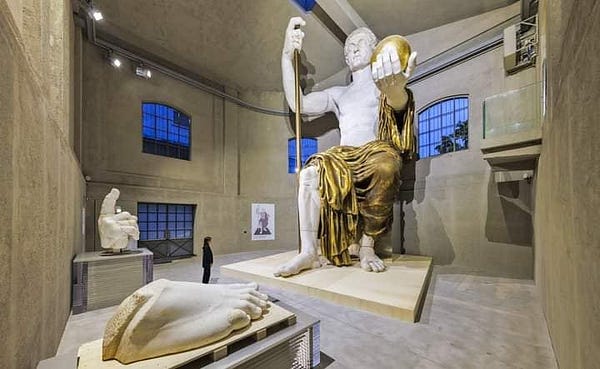
This week, Matthew P. Canepa discusses Mithra and a groundbreaking upcoming conference exploring his transcultural dynamics. Then, anti-vaxxers appropriate Hippocrates, archaeologists map Cahokia, using machine learning to decipher papyri, upcoming lectures, new ancient world journals, and more.
Mithra, “Lord of All Lands” by Matthew P. Canepa
On April 17, 2023 University of California Irvine’s Jordan Center for Persian Studies will present the international conference Mithra, “Lord of All Lands” (The Nastarant Akhavan Symposium on Iranian Religions) convened by Matthew P. Canepa and Touraj Daryaee. The first comprehensive scholarly meeting on the Iranian deity since the celebrated conference held in Tehran in 1975, the goal of this event is to foster new scholarship on Mithra from a broader Eurasian perspective. The conference will bring together a group of scholars to explore this topic from a range of disciplinary and regional perspectives, from Iran, to Central, South and East Asia, to the Mediterranean, including reexamining the problem of Roman Mithraism within the context of the broader Roman religious ecosystem.
Although not the supreme deity of Zoroastrianism, the Iranian god (Avestan yazata-) Mithra stands out as enjoying a superlative popularity in antiquity, not only across the Iranian world, but in other regions and religious traditions. The god appears both in Vedic Sanskrit as Mitra and as Miθra in the Avesta, that is the oldest texts in Iranian language, sharing a common Indo-Iranian heritage as a deity of contract, treaty and agreement. Within the variety of early Iranian religious traditions that later developed into Zoroastrianism, he is all-seeing and protects all creatures, but swiftly and pitilessly punishes all those who violate the moral foundations of society, who lie, and who abuse their station or power. He is associated with fire and the radiance of the sun in the Avesta, and in later traditions is visually and discursively portrayed as a god of light and the sun, an assimilation that first appears overtly in Strabo (15.3.732) suggesting that this coalesced after the fall of the Achaemenids.
Mithra is mentioned in later Old Persian royal inscriptions but is not portrayed visually in the Achaemenid period. However, after Alexander the Great, he develops a varied iconography in Perso-Iranian visual cultures where he nonetheless almost invariably appears with the solar rays framing his head, adopting aspects of Helios and Apollo. This is attested both visually and textually everywhere from South Asia in Kushan coinage, to Armenia and Anatolia in Orontid dynastic sanctuaries. Over the years, certain strands of scholarship have speculated whether Mithra enjoyed the status of a chief deity within certain Iranian religious traditions standing as a rival variant of Zoroastrianism.
Indeed, the god is especially prevalent in the post-Achaemenid Iranian religions of the Caucasus and Anatolia, including in Armenia and Commagene, which combined with fragmentary evidence suggest that he was prominent in Parthian Zoroastrianism. Mithra (Mid. Persian Mihr) appears in the Sasanian rock relief of Taq-e Bostan where he presides over a pact made between Ardashir II and Shapur II and a few scattered seals. While he is subordinate to the Wise Lord Ohrmazd in the main textual tradition of Sasanian and post-Sasanian Zoroastrianism as preserved in the medieval Middle Persian Pahlavi books, onomastics suggest that he remained popular throughout the Sasanian empire and in the eastern Iranian world of Central Asia. For example, his iconography cloaks that of the solar deity portrayed as a charioteer over the 38-meter tall buddha at Bamiyan (and on the conference poster) and other places in the Bamiyan Valley, which had been particularly associated with Mithra in the Avestan tradition.

This iconography appears to have impacted the earlier development of the iconography of Surya and this and other iconographies of Mithra appear further east in murals in Kucha and Dunuang in the service of Buddhism, and perhaps in a Sogdian funerary couch from China made for an expatriate merchant. As the focus of one of the more successful non-state religions in the Roman Empire, Roman Mithras shares certain key elements with Iranian Mithra, not least the name, but also certain iconographic correspondences, such as the emergence from a rock/mountain. Nevertheless, the Roman cult bears little resemblance to any known Iranian tradition, despite over a century of scholarship that has attempted to descry them beginning with Franz Cumont in the late 19th century.
The conference will revisit several problems inherited from previous generations, but seek to shift the topic of conversation away from origins or purity to approaching the deity as broader Eurasian religious phenomenon that impacted and, at times, mediated between multiple religious and political cultures. Moreover, the conference emphasizes archaeological evidence and questions. Conference participants include: Carlo Cereti (UC Irvine/University of Rome, La Sapienza) who will speak on Mithra in the Zoroastrian tradition; Lucinda Dirven (University of Radboud) on Roman Mithraism in Dura Europus and the Roman East; Frantz Grenet (Collège de France) on Mithra within Central and East Asia; Nina Mazhjoo (University of Wroclaw) on the visual cultures of Roman Mithraism; Sanjyot Mehendale (UC Berkeley) on Mithra (Bactrian Miiro) within Kushan South Asia and Gandharan art; Robert Rollinger (University of Innsbruck) on Mithra in Commagene; and Greg Woolf (UCLA) on the problem of Roman Mithras within the context of Roman religions. As previewed above, my own contribution will approach Mithra as a broader, transcultural religious and art historical phenomenon.
All are welcome to attend, either in person (UCI Humanities Gateway 1030), via Zoom, or Facebook live feed (available on the Jordan Center website and Facebook page). This conference will be followed by two future conferences on alternate Iranian religious traditions and prophet reforms, including one on Mani and Manichaeism next year and Mazdak and the Mazdakite movement the year after.
Public Scholarship and a Global Antiquity
In the Society for Ancient Medicine’s The Rootcutter, Nicolette D'Angelo has a new essay: "What Would Hippokrates Do? Classical Reception in the Age of COVID-19." As the piece addresses, the global pandemic provided an opportunity for anti-vaxxers to invoke the authority of Hippocrates to justify and legitimize their claims:
The authority of Hippocrates has been invoked time and again in support of anti-vaccination and Covid-denial movements. Nicolette D'Angelo explores what makes Hippocrates such an apt figurehead for anti-science advocates and asks what—if anything—historians and Classicists should do about it.

Last week, Bryn Mawr College announced that a large-scale mapping of Cahokia will be undertaken thanks to a large grant from the National Science Foundation (NSF), supporting archaeologists Casey Barrier, Ed Henry, Tim Horsley, and Robin Beck as they make “the most comprehensive map ever of the city of Cahokia, located in modern-day Illinois across the Mississippi River from St. Louis.” The portion they will focus on most intensively dates to the 10th and 11th centuries CE. The site was created by the Mississippian culture.

And at the Beinecke Library at Yale, “a 1,250-year-old print of Buddhist prayers — the earliest known printed text that can be reliably dated” goes on display near their Gutenberg Bible. As they note, even older than Gutenberg’s moveable type are the wood block printed Hyakumantō dharani of Japan dated to 764 and 770 C.E.

In an open access article in Scientific Reports authored by Pierre-Olivier Autran, Catherine Dejoie, Caroline Dugand, Maeva Gervason, Pierre Bordet, Jean-Louis Hodeau, Michel Anne, and Pauline Martinetto explore “Illustrating papyrus in Ancient Egypt.” The authors examine and identify particular pigments used on illustrations for the Book of the Dead fragments held at the Musée Champollion.

In other papyrology news, the Association for Research into Crimes against Art (ARCA) has a great interview with papyrologist and ancient historian Roberta Mazza. Additionally, the AP notes that in a renovated wing of Cairo’s Egyptian Museum, curators unveiled a new display of the Waziry Papyrus, a 16-meter (52-foot) long papyrus scroll. It dates to Roman Egypt ca. 50 BCE and “contains around 113 spells from the Book of the Dead.” Finally, papyrologists, digital humanists, and specialists in machine learning are coming together to try and read a carbonized papyrus from the Villa of the Papyri (Herculaneum), as reported by Live Science. At the 2023 SCS-AIA annual meeting in New Orleans, papyrologist Richard Janko noted that the newest Herculaneum papyrus to be examined is a lost work that “contains the names of a number of Macedonian dynasts and generals of Alexander."
They've trained a computer program how to detect ink on papyri by letting it analyze ancient scrolls with computed tomography (CT) scans, which take thousands of X-rays to make 3D digital images. "They have visible writing, so we can match up the ink locations with the exact place to search for that ink in the micro-CT," [Brent] Seales told Live Science in an email.
For an outline of the process for virtually unwrapping these scrolls, see:
Over at the American Numismatics Society (ANS), ancient historian Jane Sancinito has an informative essay outlining “A Brief History of the Receipt.” Spanning from Proto-Cuneiform tablets, to Hellenistic ostraca, to the Song Dynasty Jiaozi (交子), to the modern paper printout: its history is longer than a CVS receipt. Sancinito notes, “As it turns out, practical and straightforward as they are, the history of receipts is the history of humans at work, and that can be extremely interesting.”

In terms of reception of antiquity, artist Kate McQuillen has a new exhibition on until April 1, 2024, with numerous paintings inspired by Greek ceramics and statues. And in drama news, CMU put on a version of “Lysistrata” set in 1960s Woodstock, while Sophie Okonedo stars in “Medea” in London until April 22, 2023. Finally, the Swiss playwright Milo Rau in 2020 developed a new version of “Antigone” that addresses the destruction of the Amazon and Indigenous peoples in Brazil. Although the pandemic scuttled plans for the play, actress and activist Kay Sara discusses the project.
There will be a new movie focused on the life of the Stoic philosopher Seneca released in late March 2023. By all accounts, it looks bananas. In other movie news, Ridley Scott's sequel to Gladiator will be released on November 22, 2024. And a new movie called The Return has Ralph Fiennes and Juliette Binoche depicting Odysseus’ return to Ithaca set for release in 2024. It sounds like the next few years will give us a lot of movies focused on Greco-Roman antiquity. We are indeed entertained—and, I mean, how could we not be with John Malkovich as Seneca?
New Antiquity Journal Issues (by @YaleClassicsLib)
Historia Vol. 72, No. 2 (2023)
Journal of Social Archaeology Vol. 23, No. 1 (2023) NB J. A. Baird, et al. “Knowing Palmyra: Mandatory production of archaeological knowledge”
Antiquity Vol. 97, No. 391 (2023)
Comparative Oriental Manuscript Studies Bulletin Vol. 8, No. 1 (2022) #openaccess
Journal of Roman Archaeology Vol. 35, No. 2 (2022)
Classical Receptions Journal Vol. 15, No. 1 (2023)
Early Medieval Europe Vol. 31, No. 1 (2023)
Bulletin of the Institute of Classical Studies Vol. 65, No. 1 (2022) Liberation philology: decolonizing Classics in Africa, a native view from the South
Journal of Ancient History and Archaeology Vol. 9, No. 4 (2022) #openaccess
Euphrosyne Vol. 50 (2022) #openaccess
Semitica et Classica Vol. 15 (2022)
Heródoto Vol. 7 No. 1 (2022) Recepção, leituras e influências de Homero
Classical World Vol. 116, No. 2 (2023)
Antichthon Vol. 56 (2022)
Byzantion Vol. 92 (2022)
Journal of the Warburg and Courtauld Institutes Vol. 85 (2022)
Polis Vol. 40, No.1 (2023) A Memorial in Honor of Rex Stem, Scholar & Friend
Journal for the Study of Judaism Vol. 54, No. 1 (2023)
Journal of Ancient Judaism Vol. 14, No. 1 (2023)
Harvard Theological Review Vol. 116, No.1 (2023)
Conferences, Lectures, and CFPs
On February 27, 2023 at 6:00-7:00 pm GMT, Oliver Baldwin will give a public lecture “on how performances of ancient tragedies have been used to tell LGBT+ stories.” Find out more information and register here.


On Monday, February 27 at 6:00pm EDT at the CHS, House A, 3100 Whitehaven St. NW Washington DC 20008, Jackie Murray will be giving a fireside chat with a reception to follow and a tour of the Black Classicists Exhibit. In person registration will be capped at 40 persons, please RSVP to events@chs.harvard.edu by Thursday, February 23. Then, on Tuesday, February 28, 2023 at 5:30pm EDT at 500 Howard Pl NW, Washington, DC 20059 and on Zoom, Murray will be giving the Frank M. Snowden, Jr. lecture for Howard University on “Contra Nationem Natum: the study of race in antiquity in the New Jim Crow era.” Register and find out more about this lecture event by contacting caroline.stark@howard.edu.
On Friday, March 10, 2023 - 12:00pm to 1:00 pm ET, art historian Sarah Bassett will be speaking to the Yale Institute of Sacred Music on “The Historical Frieze on the Arch of Constantine.” The respondent will be Noel Lenski. You can register here.
And finally? A colossal thank you for reading!












